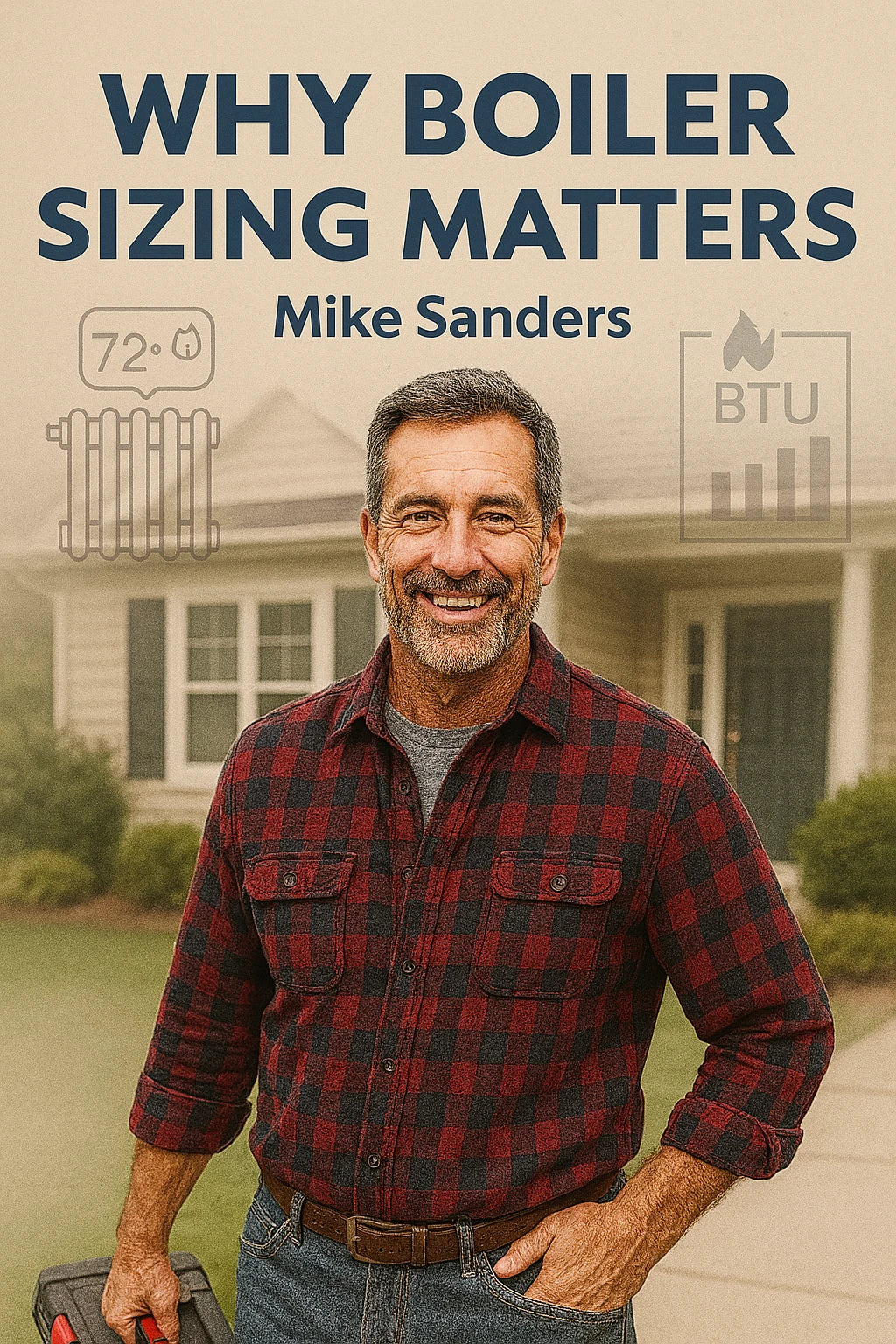Selecting a boiler solely on capacity (e.g., 100,000 BTU/hr) can be misleading. Too big—and it cycles on/off inefficiently; too small—and you’ll face cold spots or running out of hot water. Proper sizing ensures comfort, consistent performance, and long-term value. This guide is tailored for Mike Sanders: a practical, detail-oriented homeowner who wants his heating investment to match his home's exact needs.
🏠 2. Understanding BTU and Boiler Output
-
BTU/hr (British Thermal Units per hour): a measure of heat output—1 BTU raises 1 lb of water by 1 °F.
-
The Weil‑McLain CGA‑4 is rated at 100,000 BTU/hr, or approx 29 kW, a significant capacity more common in larger homes.
-
Rule of thumb: 1.5 kW (~5,000 BTU/hr) per radiator and 3 kW (~10,000 BTU/hr) per bathroom in simple sizing guides
📏 3. Calculate Your Home’s Heat Load
3.1 Radiators, Bathrooms & Occupants
-
Combi boiler sizing tables suggest:
-
10–15 radiators + 1–2 bathrooms ≈ 28–34 kW (~95,000–116,000 BTU/hr)
-
3.2 Room-by-Room Heat Loss
-
Step 1: calculate total volume (ft³).
-
Step 2: apply BTU factor (e.g., 5 BTU/ft³ for average insulation)
-
Example: 1,500 ft² with 8′ ceilings → 12,000 ft³ × 5 ≈ 60,000 BTU/hr.
3.3 Climate & Insulation Factors
-
Cold climates or older homes add 10–20% to BTU requirement
⚠️ 4. Oversized vs. Undersized Consequences
| Problem Type | Oversized Boiler (e.g., 100k BTU when 60k needed) | Undersized Boiler (e.g., 60k for 100k need) |
|---|---|---|
| Efficiency | Short cycles = less efficient, wear on components | Runs constantly, may never hit desired temp or keep up with demand |
| Comfort | Uneven heating, noise, wasted energy | Cold rooms, insufficient hot water, unhappy occupants |
| Economy | Higher fuel and maintenance costs over time | Users may add secondary heating or bypass system for hot water |
🌡️ 5. Is 100,000 BTU the Right Fit?
For Mike Sanders—whose home is moderately large, well-insulated, but with multiple bathrooms—here’s a breakdown:
-
Radiators: Suppose 18 units × 5,000 BTU = 90,000
-
2 bathrooms: + ~20,000 BTU = ~110,000
-
Climate buffer: +15% → ~127,000 BTU/hr
That means a 100,000 BTU boiler is in the right ballpark—may run at ~80% capacity most days. But installing panel radiator zoning is smart to optimize performance.
🛠️ 6. Checklists for Accurate Sizing
A. Room Heat-Loss Survey
-
Measure each room’s volume and insulation quality, then calculate total BTU requirement.
B. Boiler Type & System Design
-
Hydronic systems with hot-water cylinders (like CGA‑4) need sizing to cover both space heating and water heating demand.
C. Adjustable Output & Controls
-
The CGA‑4 supports modulating or staged firing to vary heat output—ideal for matching load variability in Mike’s home.
D. Consult a Pro
-
Finalizing proper sizing requires a certified HVAC engineer—DIY calculations are a great start, but only a detailed load calc (e.g., via Manual J) seals the deal.
🌐 7. Resources & Tools for DIY
🧩 8. Final Sizing Summary for Mike’s Home
-
Approximate BTU need (space + water + cold buffer): 110K–130K BTU/hr.
-
The Weil‑McLain CGA‑4 at 100K BTU sits slightly below—but with staging, zoning, and solid insulation, it’s a smart, efficient option—balanced and reliable for long-term heating performance.
✅ 9. Action Plan
-
Survey & calculate room sizes, insulation, existing radiator demands.
-
Run calculator tools for ballpark kW/BTU needs.
-
Compare to CGA‑4’s output—verify matched closely.
-
Consult installer for Manual J heat-load analysis and proper staging setup.
-
Design zones to match hot water and heating demand without oversizing.
In the next topic we will know more about: Why Boiler Material Matters







